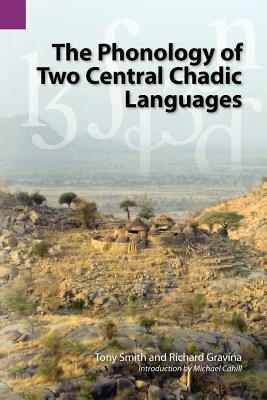
- We will send in 10–14 business days.
- Author: Tony Smith
- Publisher: SIL International, Global Publishing
- Year: 2009
- Pages: 268
- ISBN-10: 1556712316
- ISBN-13: 9781556712319
- Format: 15.2 x 22.9 x 1.4 cm, minkšti viršeliai
- Language: English
- SAVE -10% with code: EXTRA
Reviews
Description
These two phonologies of the Chadic languages Muyang and Mbuko present typologically unusual data, the bulk of which is found in the vowel systems. Prosodies of labialization and palatalization can span entire words, affecting both vowels and consonants. Morphemes are of three types: neutral, labialized, and palatalized. At a deep level, these languages have only one or two basic vowels; all other vowel qualities result from the interplay of other factors. The labialization and palatalization prosodies do not operate identically, but may co-occur in Muyang, and possibly in Mbuko. The consonantal and tonal systems also have points of interest. Both Muyang and Mbuko have lateral fricatives, implosive stops and prenasalized voiced stops. Both have three tone levels but no contour tones or downstep. Voiced obstruents and voiced fricatives in Muyang and Mbuko are tonal depressors. These phonologies are written in a broadly generative rule-based framework, but theorists from various persuasions will find much of interest, including Muyang labialization patterns related to adjacency and consonant/prosody/vowel interactions, Mbuko tones and adjacency, and a Muyang []cor] autosegment causative morpheme. The works in this volume are the result of years of intensive contact with the speakers of Muyang and Mbuko by the authors.
EXTRA 10 % discount with code: EXTRA
The promotion ends in 22d.08:00:43
The discount code is valid when purchasing from 10 €. Discounts do not stack.
- Author: Tony Smith
- Publisher: SIL International, Global Publishing
- Year: 2009
- Pages: 268
- ISBN-10: 1556712316
- ISBN-13: 9781556712319
- Format: 15.2 x 22.9 x 1.4 cm, minkšti viršeliai
- Language: English English
These two phonologies of the Chadic languages Muyang and Mbuko present typologically unusual data, the bulk of which is found in the vowel systems. Prosodies of labialization and palatalization can span entire words, affecting both vowels and consonants. Morphemes are of three types: neutral, labialized, and palatalized. At a deep level, these languages have only one or two basic vowels; all other vowel qualities result from the interplay of other factors. The labialization and palatalization prosodies do not operate identically, but may co-occur in Muyang, and possibly in Mbuko. The consonantal and tonal systems also have points of interest. Both Muyang and Mbuko have lateral fricatives, implosive stops and prenasalized voiced stops. Both have three tone levels but no contour tones or downstep. Voiced obstruents and voiced fricatives in Muyang and Mbuko are tonal depressors. These phonologies are written in a broadly generative rule-based framework, but theorists from various persuasions will find much of interest, including Muyang labialization patterns related to adjacency and consonant/prosody/vowel interactions, Mbuko tones and adjacency, and a Muyang []cor] autosegment causative morpheme. The works in this volume are the result of years of intensive contact with the speakers of Muyang and Mbuko by the authors.


Reviews